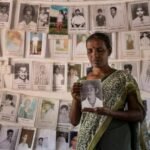Displacement during the Srilanka Civil War
Displacement during the Sri Lankan civil war (1983-2009) was a significant and tragic consequence of the conflict, affecting hundreds of thousands of people. Here are some key aspects regarding displacement in this context:
### Scale of Displacement:
1. **Internal Displacement**: At the height of the conflict, it is estimated that around 800,000 to 1 million people were internally displaced within Sri Lanka. Many were forced to flee their homes due to military operations, violence, and ongoing threats from both government forces and the LTTE.
2. **Refugees**: A significant number of Tamils sought refuge in other countries, especially during the early years of the war. Many fled to India, Canada, Australia, and various Western countries, leading to a Tamil diaspora that continues to advocate for their rights.
### Causes of Displacement:
1. **Military Operations**: Large-scale military offensives, especially in the Northern and Eastern provinces, forced civilians to evacuate their homes. The government’s strategy often involved declaring areas “no-fire zones” while launching attacks, leading to civilian casualties and displacement.
2. **Ethnic Violence**: Escalating ethnic tensions and violence, including riots and attacks on Tamil communities, contributed to the displacement of many Tamils.
3. **Human Rights Abuses**: Fear of extrajudicial killings, enforced disappearances, and other human rights abuses led many to flee their homes in search of safety.
### Conditions of Displacement:
1. **Internment Camps**: After displacement, many internally displaced persons (IDPs) were housed in camps, particularly in the final stages of the war. Reports indicated that these camps often had inadequate living conditions, including overcrowding, insufficient sanitation, and limited access to food and healthcare.
2. **Loss of Livelihood**: Displacement resulted in the loss of homes, land, and sources of income. Many families faced economic hardships and struggled to rebuild their lives after returning to their areas of origin.
### Post-War Displacement:
1. **Return and Resettlement**: After the war officially ended in 2009, many displaced individuals and families sought to return to their original homes. However, the process of resettlement was often complicated by land disputes, destruction of property, and lack of government support.
2. **Ongoing Challenges**: Even years after the war, many IDPs and returnees continue to face challenges, including lack of access to adequate housing, education, and healthcare, as well as lingering trauma from their experiences.
3. **Reconciliation Efforts**: The Sri Lankan government and international organisations have made efforts to address the needs of displaced populations, but the effectiveness of these initiatives has been a subject of debate.
### Conclusion:
The displacement experienced during the Sri Lankan civil war reflects the broader humanitarian crisis created by the conflict. Addressing the needs of displaced individuals and communities remains a critical aspect of the ongoing reconciliation and recovery process in Sri Lanka.






